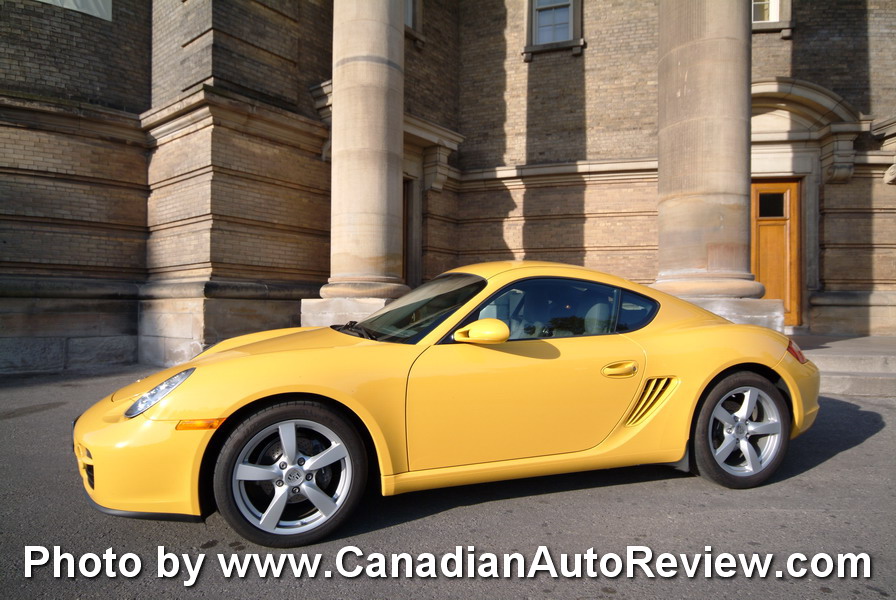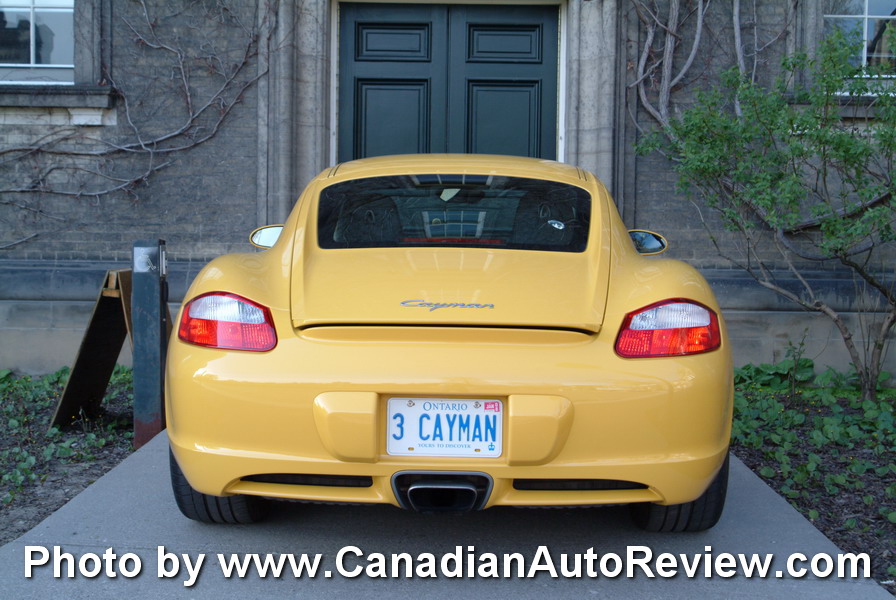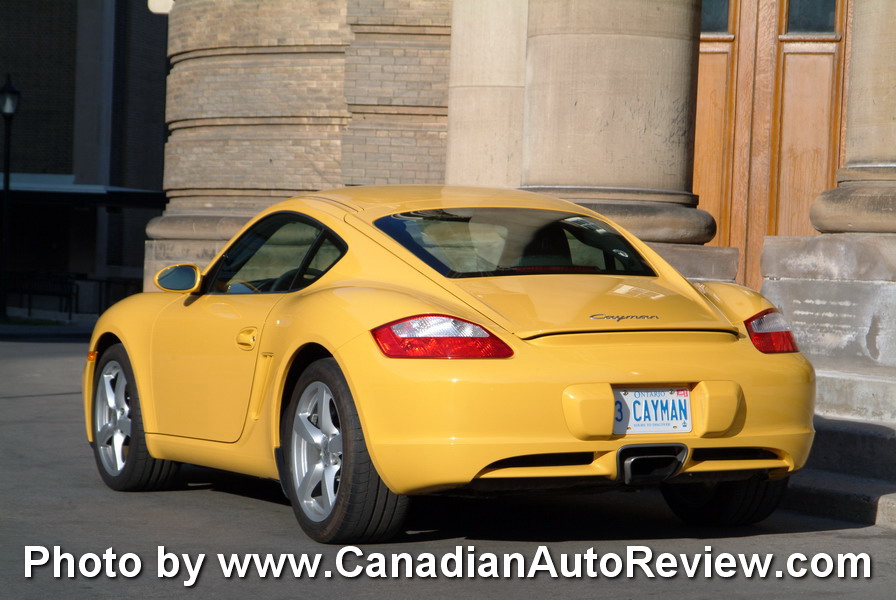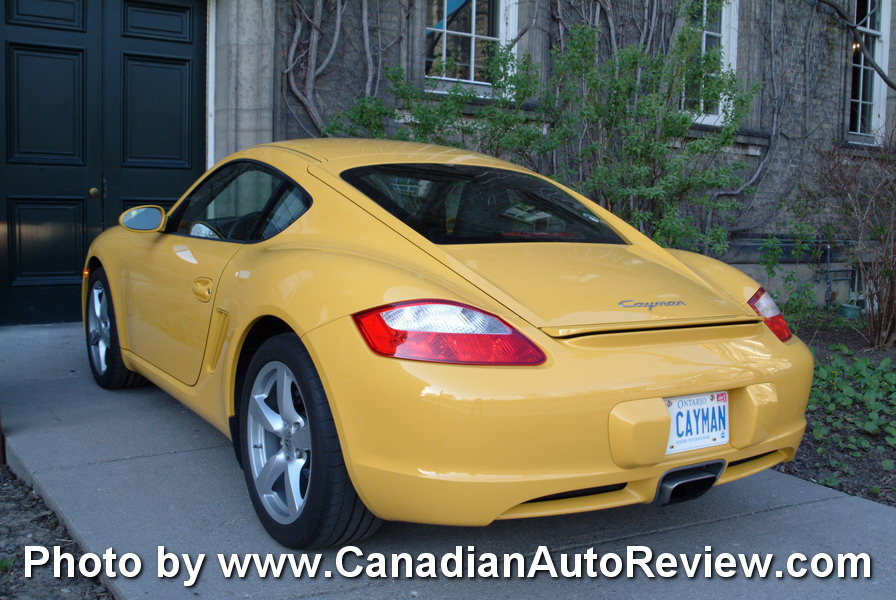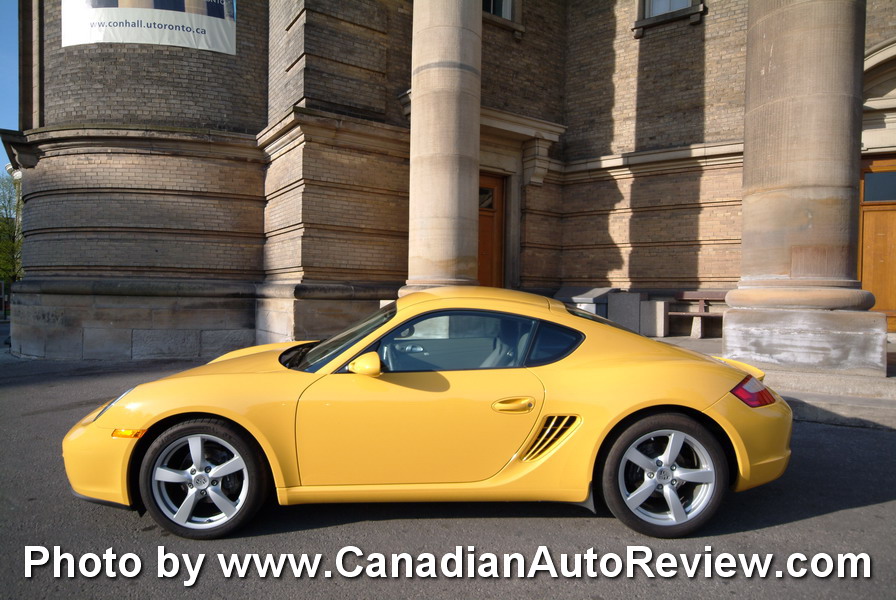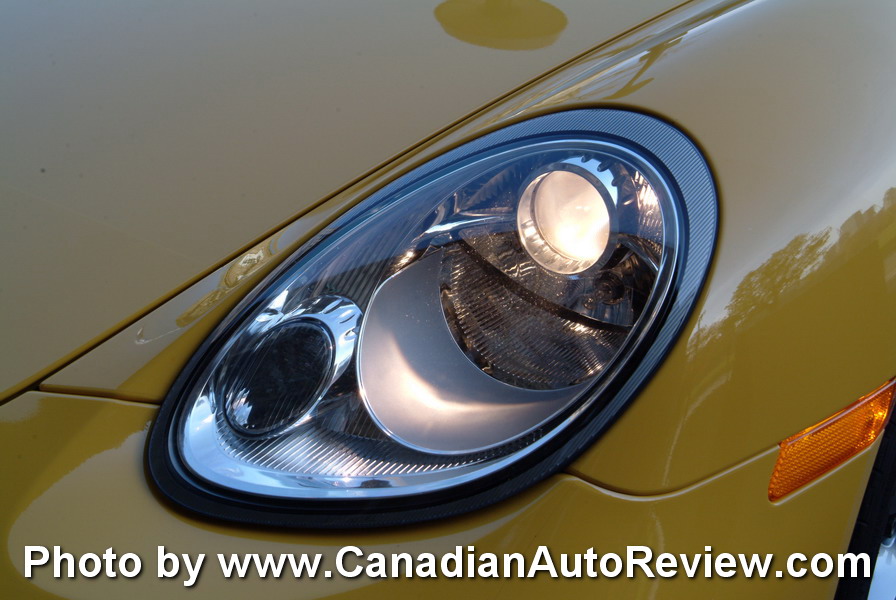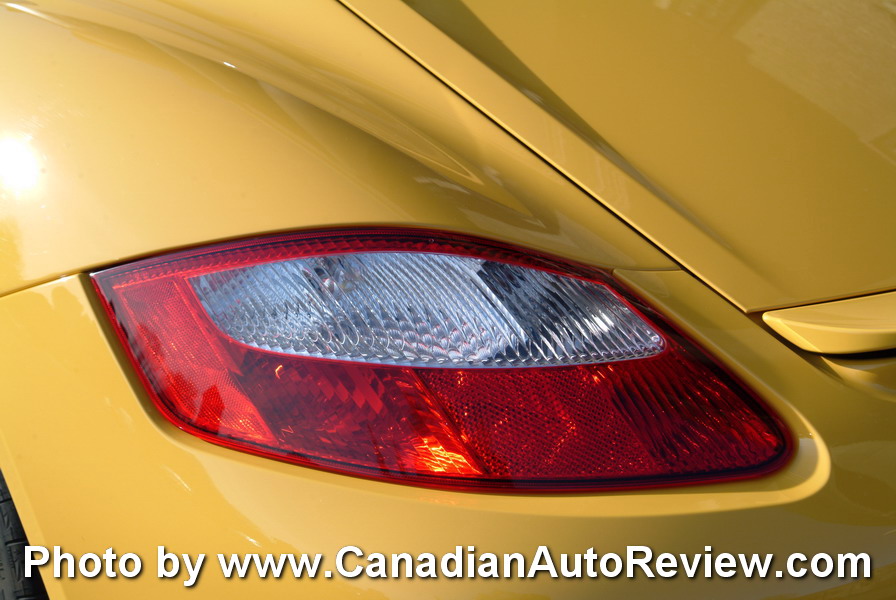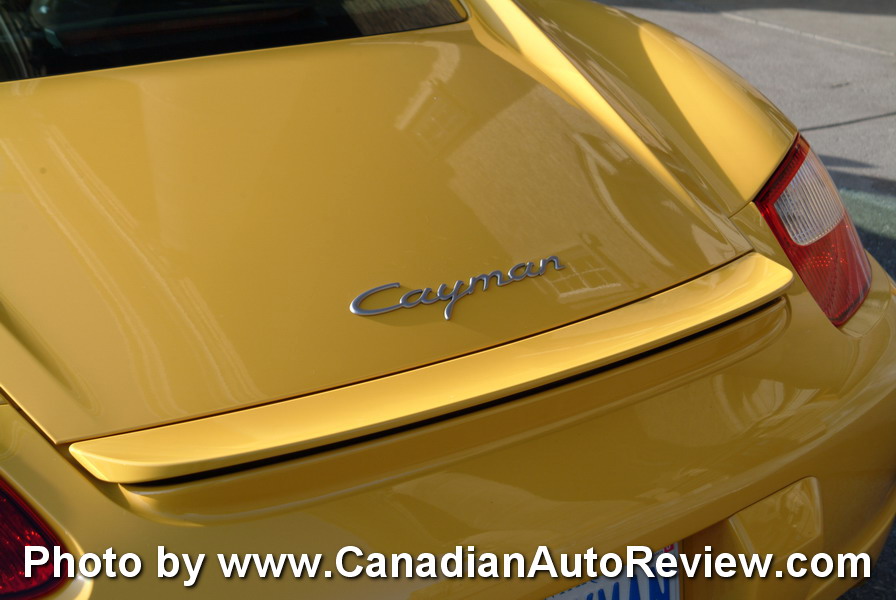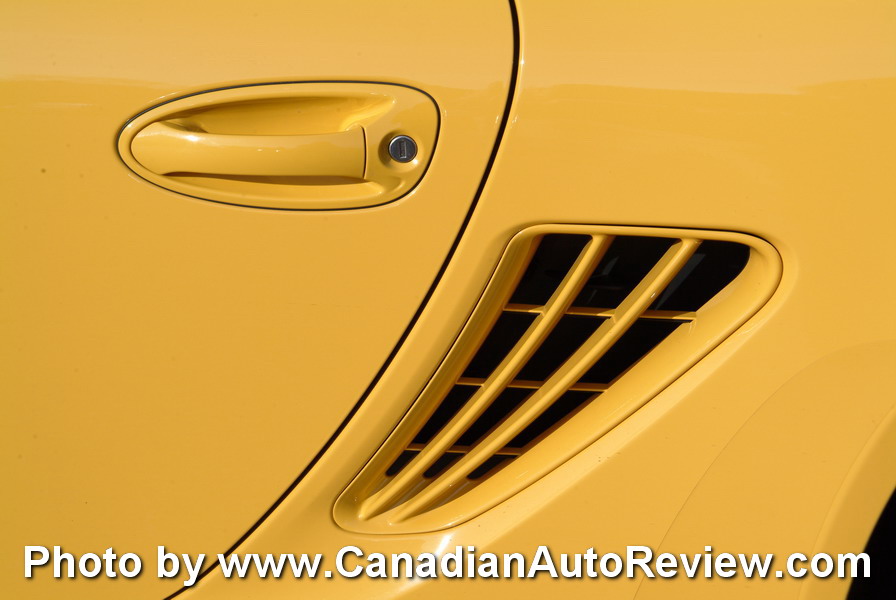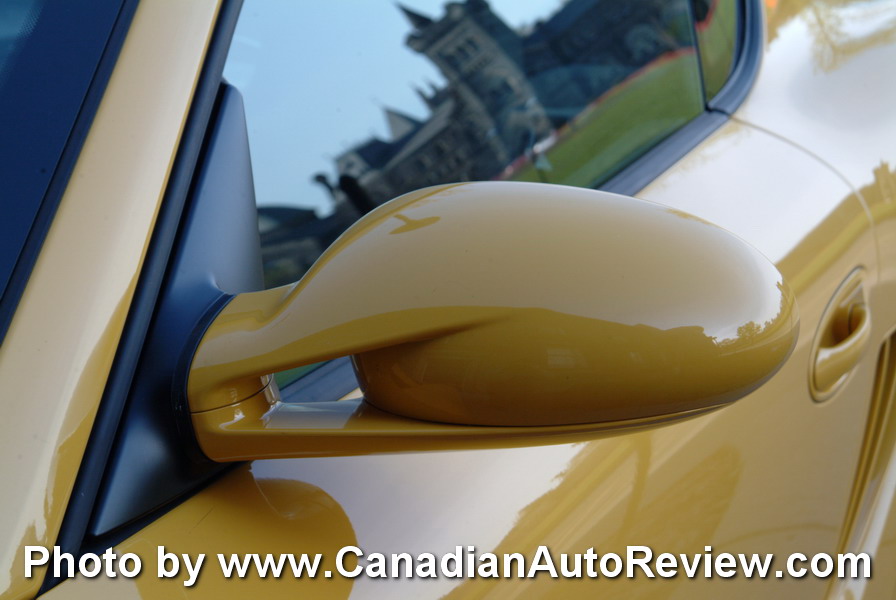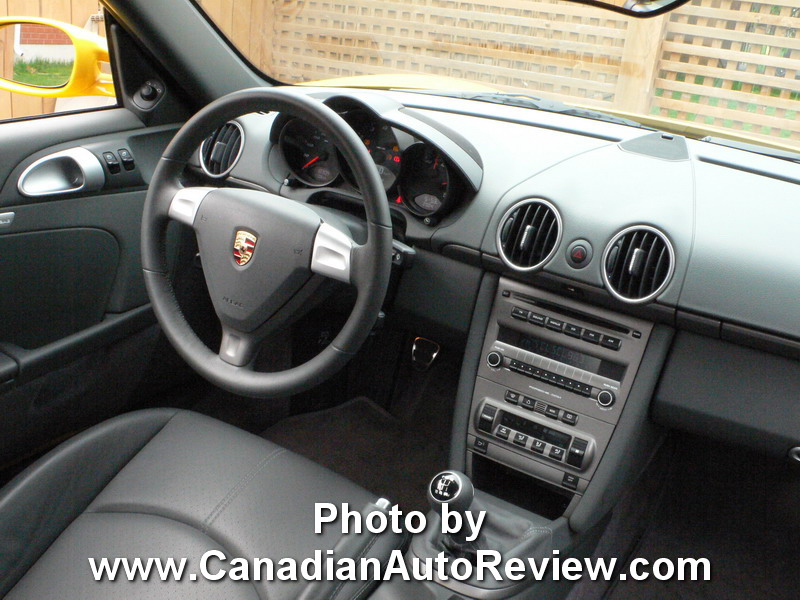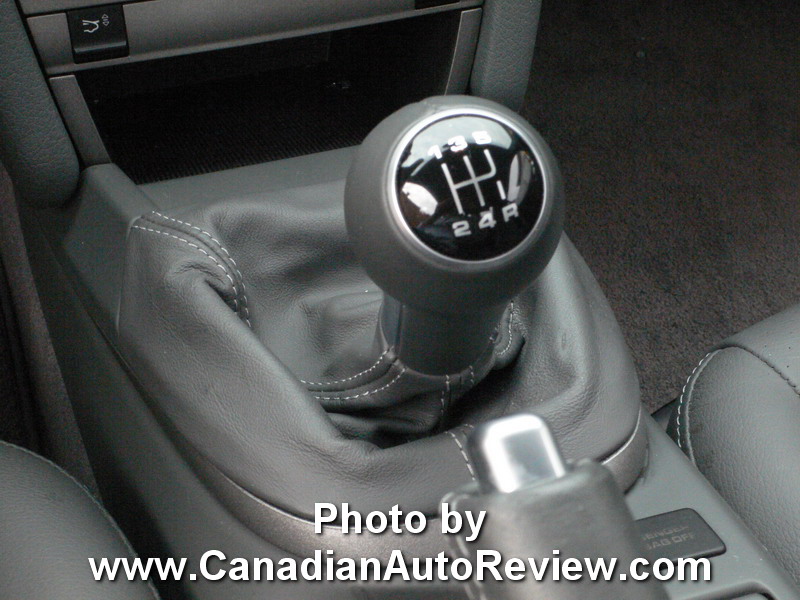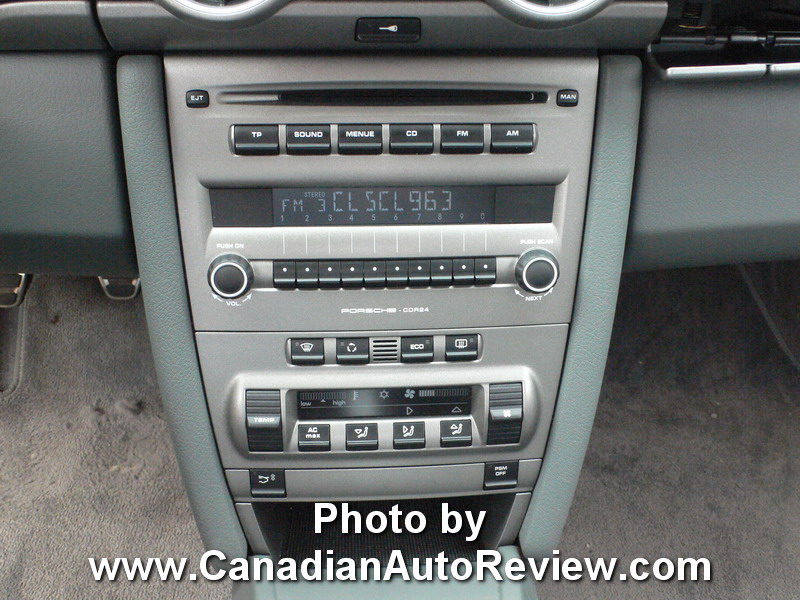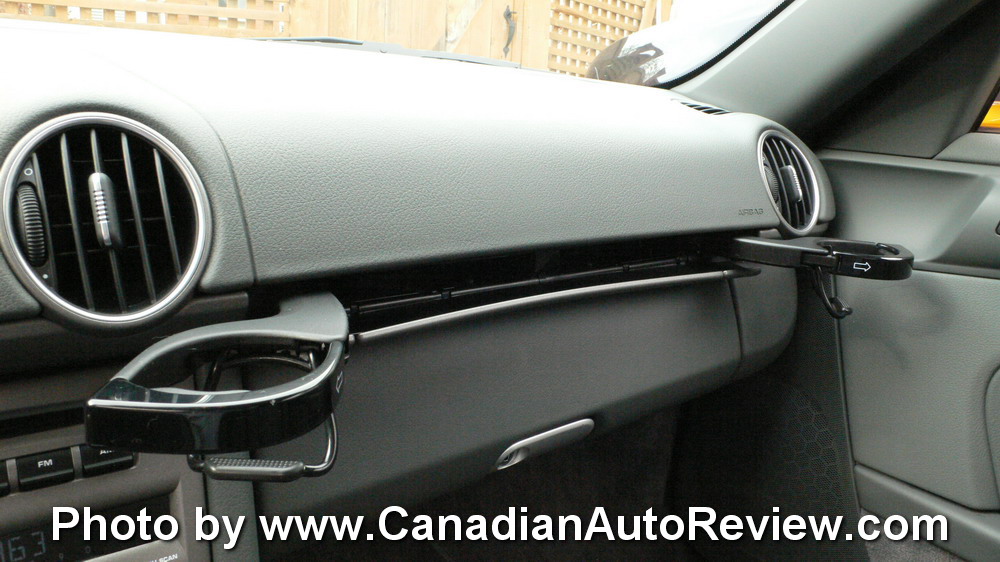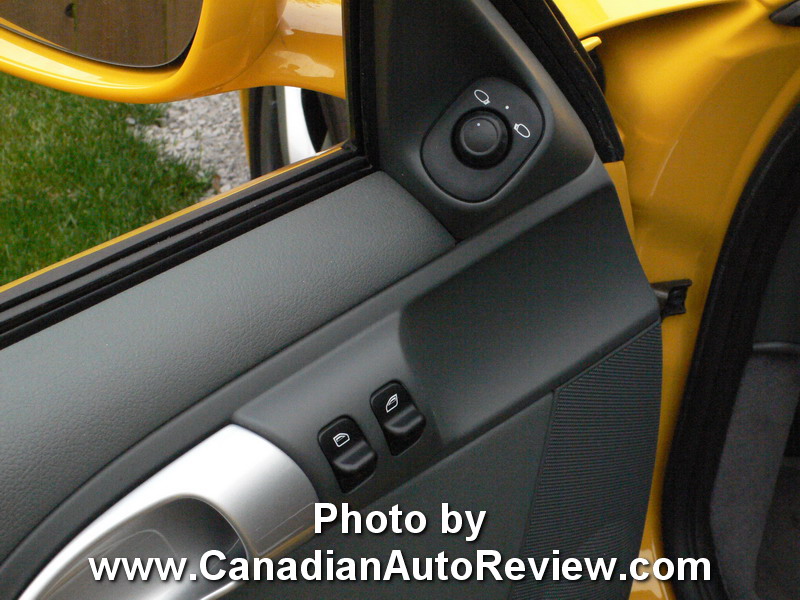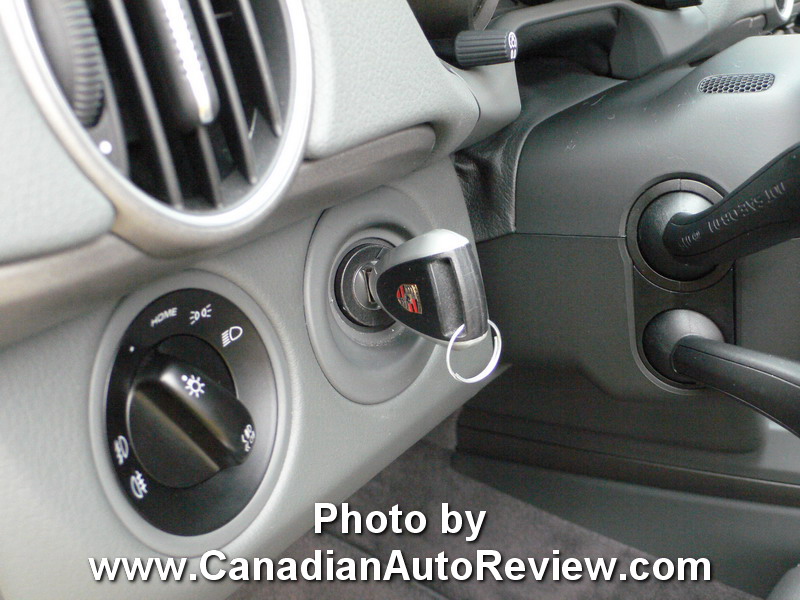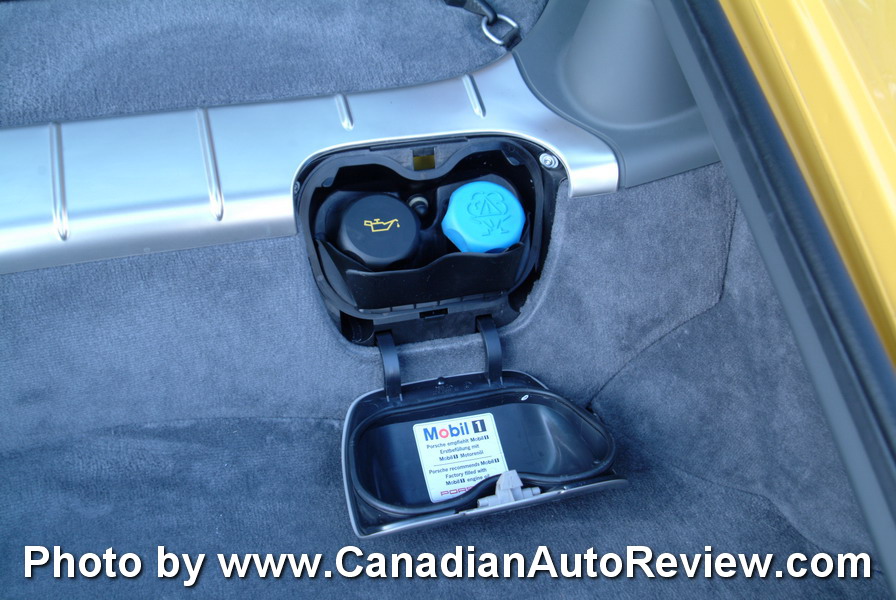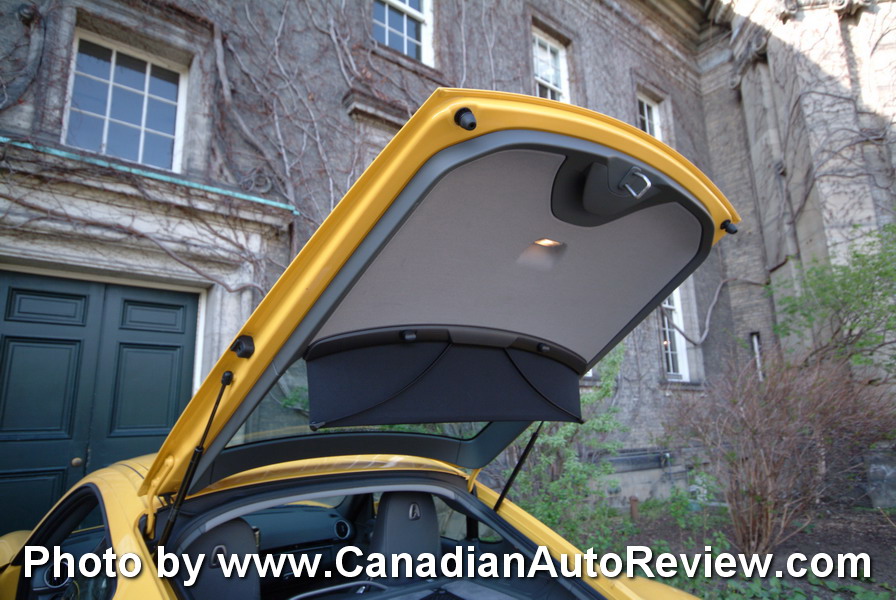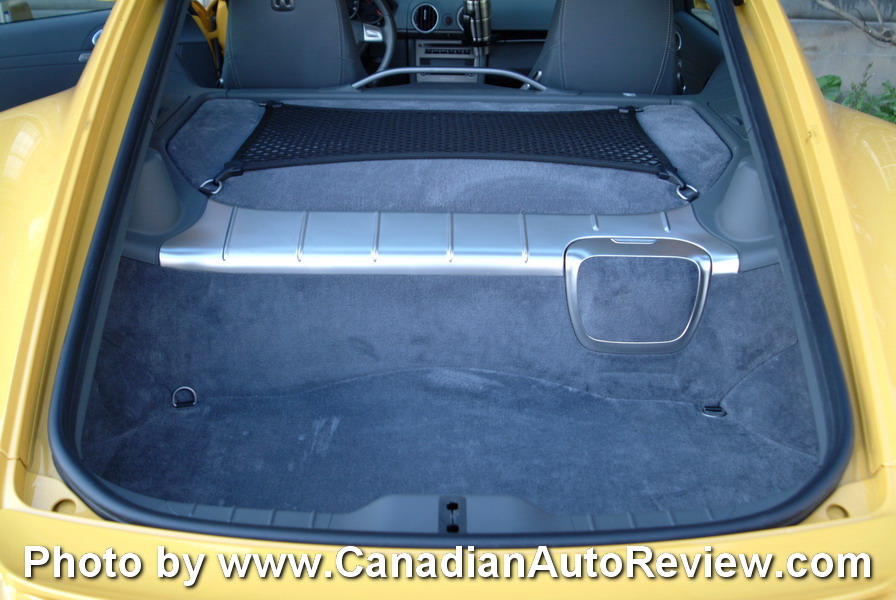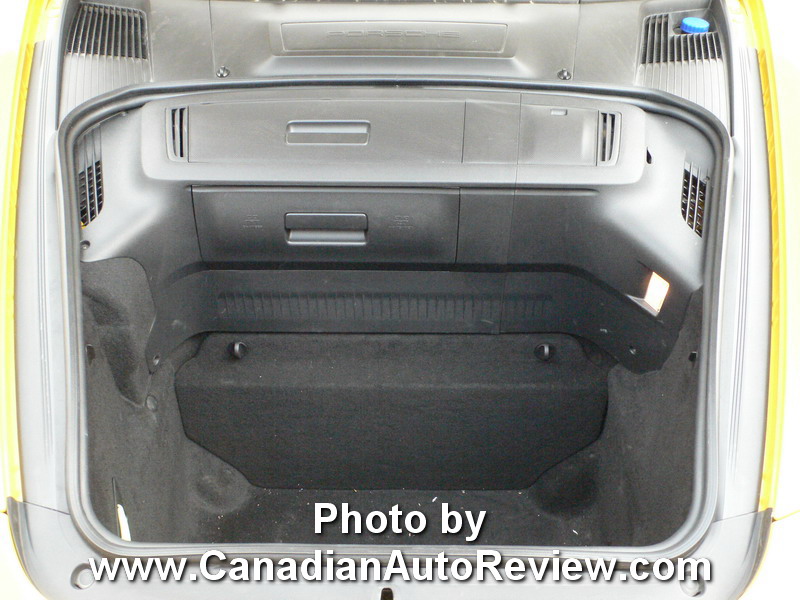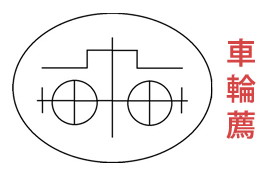
2009 Porsche Cayman

Written by: Sammy Chan
Photography by: Sammy Chan
It was two Januarys ago when Porsche kindled its fans with an all-new Boxster-derivative, the Porsche Cayman S. Although Porsche was brimming with smiles and confidence at the time of its launch, many (including me) had reservations and were quite skeptical of the whole process. What didn’t convince us was the higher premium Porsche had demanded for its Cayman S when a drop-top version, albeit adorned with a smaller engine and a lesser rigid structure (inherent by design) could be have for sixty six hundred less of the Cayman S’s asking price of $83,900.
All our suspicions and worries have since proved to be rather unnecessary. A year and a half later, the Porsche Cayman S has turned out to be a phenomenal success for Porsche. Not only has it brought much needed revenue to Porsche’s treasury, the Cayman S has also become one of the best single selling model in Porsche’s line-up. Judging from Porsche’s most recent release of its market sales in the states (U.S. data provide a more accurate picture, it is after all the world’s biggest market for Porsche), sales of the Cayman S is very strong. For all of last year, Porsche has sold 3321 Cayman S in the states. In comparison, there were only 802 deliveries for the Boxster S. Even teaming up with the base Boxster, sales are 1070 shy of the Cayman S. Needless to say that what we thought was a bold move for Porsche has turned out to be a sound market decision.
One thing we are very convinced about is that there will be a base Cayman in the horizon. Sure enough, not long after the launch of the Cayman S, Porsche has now added an entry-level model to the family, the Cayman.
Lineage in the Cayman has thus become the same as the Boxster, consisting of just 2 trims, the Cayman and the Cayman S. Similarly, differences between the Cayman and the Cayman S could also be found in the engine, transmission and tires. The Cayman has an M.S.R.P. of $69,600, some $14,300 less than the Cayman S and about six thousand more expensive than a similarly equipped, albeit roofless Boxster.
Powering the Cayman is a 2.7-litre horizontally-opposed six cylinder engine, its displacement is 700 c.c. smaller than the Cayman S. Being a midship design, the Cayman’s engine is located behind the seats and in front of the rear compartment. Cylinder head and body is all aluminum and the engine utilizes Porsche’s VarioCam Plus valve lift control technology to provide optimum power with least fuel consumption and emissions. At 6500 rpm, the engine delivers a maximum horsepower of 245 and from 4600 to 6000 rpm, it can pump out 201 lb-ft of torque.
Initially, the Cayman did enjoy a slight power advantage over the Boxster with a slightly better output both in horses and in torque. However, the 2007 Boxster engine has since been upgraded and is now on even terms with the Cayman. Similar scenario could be found with the Cayman S. What was once a 15-hp justifiable differentiator between the Cayman and the Cayman S has now become impasse, with the 07 Boxster S also getting the same 3.4-litre engine as seen duty in the Cayman S.
As was mentioned earlier, differences between the Cayman and the Cayman S could also be found in the transmission. It is also here that the Cayman draws the most criticism. Standard transmission in the Cayman is a 5-speed manual and not the soon-to-be-norm 6-speed. One can’t help but wonder whether Porsche has done this deliberately in order to justify the big price gap between the S and the non-S. There’s no denying the fact that a 6-speed manual transmission is also available should Cayman buyers desire, however by doing so, Porsche might find themselves spending more money in educating their buyers that their market decision is a worthy one.
My test car is equipped with the standard fare which has excellent throws. Shifting is smooth but not as short as say the Honda S2000. Gearing seems to be a bit on the tall side with 1st and 2nd ending at about 67 km/h and 109 km/h respectively. 5th gear at 100 km/h is at a lowly 2,450 rpm. Overall appropriate at this day and age when fuel cost is at an all-time high. At the end of a week’s long driving, the trip computer in my tester registered an average fuel consumption of 10.7 litre per 100 km, which is much better than expected considering that it has been used as a real sports car and not a daily runner to the corner store.
Clutch feel is heavy in typical Porsche fashion. Unless flooring the gas pedal at launch, initial take-off is rather unexciting. However, once it gathers speed, the Cayman can prove to be a fierce machine. It will certainly deliver that spine-to-the-seatback feel one would often experience in a Porsche 911 Carrera. Manufacturer’s data reveal that the Cayman with the 5-speed manual would need 6.1 second to reach 100 km/h from a standing start and top speed is quoted as 258 km/h.
The precise and direct steering feel returns great feedback about the way the car is heading. No other sports car south of $70,000 could provide you with the same reward a Porsche does. Just as in the Boxster, front and rear suspension feature MacPherson struts and not double wishbones or multi-links that one would expect from such a sports machine.
Handling nevertheless is excellent and there are many track professionals out there who would tell you that they might prefer a Cayman than a Porsche 911 if they are asked to deliver the shortest lap time possible. It also helps that the Cayman is fitted with Michelin Pilot Sport on all 4 corners. Standard tire sizes in the Cayman is front 205/55ZR17 and rear 235/50ZR17. My tester has the optional 18-inches with front sporting 235/40ZR18 and rear 265/40ZR18, totaling $1,730.
Theoretically speaking, the hard-top Cayman should return better handling than the roofless Boxster. That’s certainly true when high limit stability is concerned. Porsche claims that the Cayman is 100% stronger than the Boxster both in torsional and in bending rigidity. As a matter of fact, the Cayman’s rigidity is pretty close to its bigger brother, the 911 Carrera. I can certainly attest to that fact as it was only weeks later that a Porsche Boxster was delivered to my doorsteps.
There are two similar sounding abbreviations that you are well advised to know if you’re heading towards a Porsche dealer. They are PSM and PASM. PSM stands for Porsche Stability Management and PASM stands for Porsche Active Suspension Management. PSM is standard equipment on all Porsches while PASM is optional in the Cayman. Together with Porsche Traction Management, PSM helps to correct both oversteering and understeering during cornering maneuvers and driving on poor road and weather condition. By using automatically adjustable shock absorbers, PASM can monitor road condition and adjust its suspension automatically. The driver is provided with two damper modes- Normal and Sport to suit individual style and taste.
The Porsche Cayman has all the lines and curves that a stylist would die for, conjuring up memories of the famed Porsche 356 as well as the Porsche Spyder 550. It is at its best when judging from the rear as the Cayman has the best looking butt of all Porsche. Front styling is not spectacular as it has that shared 911 appearance. The Cayman is larger than the Boxster in length and in height, while wheelbase and vehicle width remains the same. It’s not easy to pinpoint the differences in external styling between the Cayman and the Cayman S. Twin exhaust pipes and red brake calipers are replaced with a single tail port and black brake calipers in the Cayman and that’s about it.
Although the Porsche Cayman is strictly a 2-seater, it will surprise a lot of people when lots of cargo and storage room are called for. Storage under the front hood and under the rear hatch can accommodate a total of 410 liters of stowage and that’s 130 liter more than the Boxster. Interior design is carried forward from the Boxster and is generally well-designed, certainly light years ahead than Porsches of the 80’s. Gauges are a 3-dial design with the tachometer taking centre stage of course. Flanking the left and right of it is the speedometer and fuel tank/oil pressure indicators. As if to compensate for the smallish speedometer, Porsche has also provided you with a digital readout of your vehicle speed.
With a mid-engine layout and a strong body structure, the Cayman has all the ideal elements necessary for a pure Porsche and there underlies its strong appeal. To answer your curiosity (mine too) as to which Cayman has the upper hand in the market, here are some sales figures from that same Porsche release. For the first 5 months of 2007, Porsche has sold 1169 Cayman and 1311 Cayman S in U.S., with last month’s sales also reflecting the same leaning towards the Cayman S. Hence, it does seem that the Cayman S is worth the extra money it demands, but there are still lots of buyers who would just like to leave enough alone.




